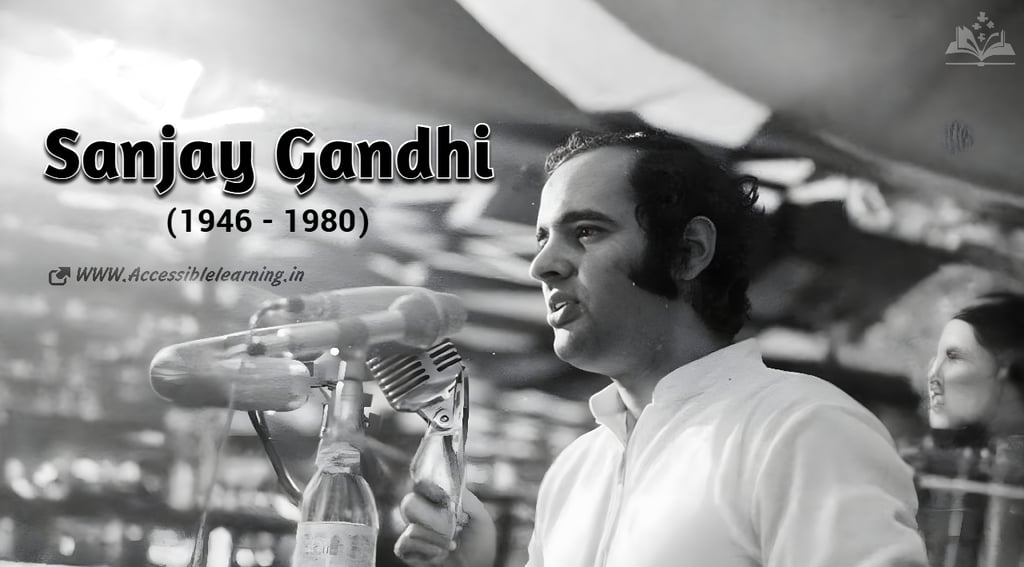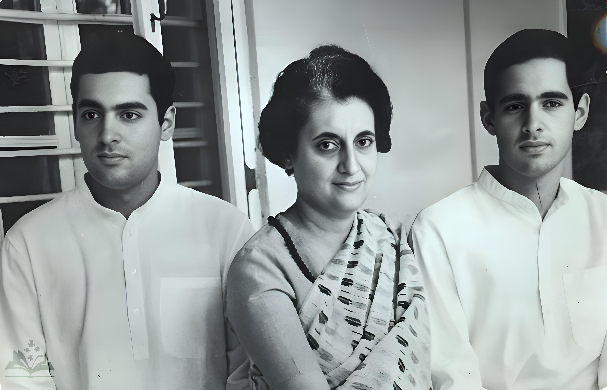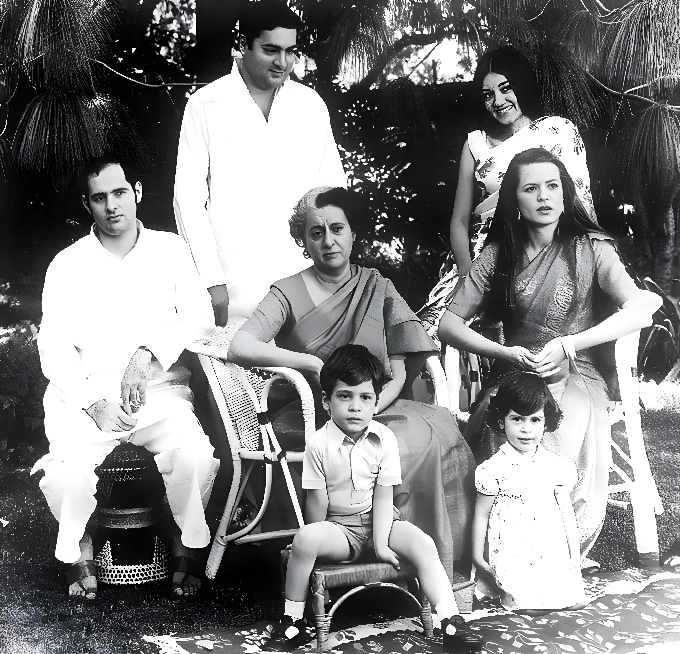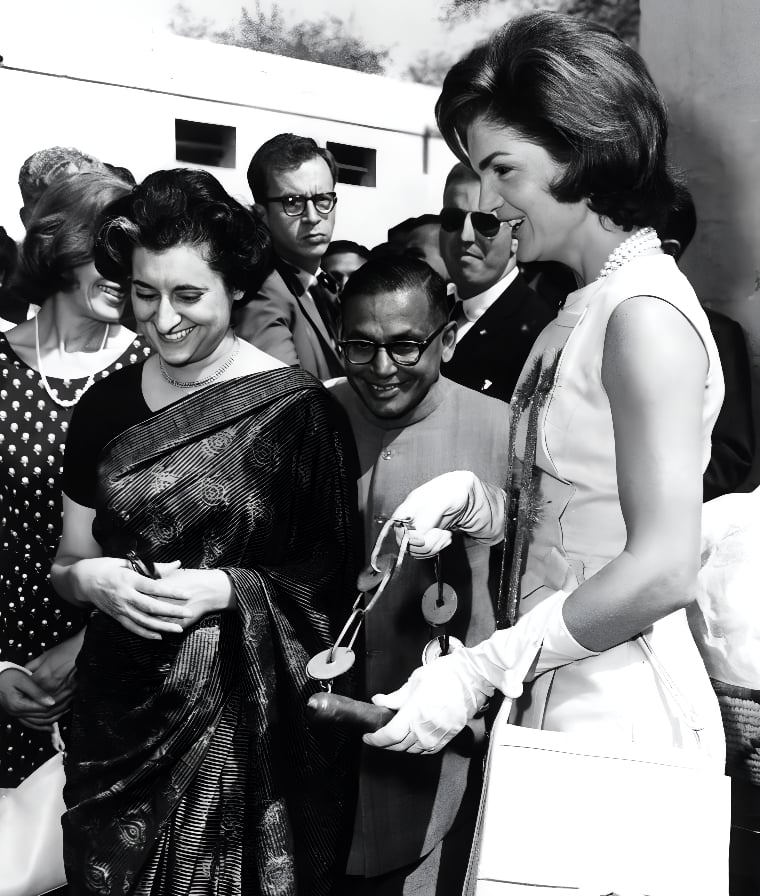
Sanjay Gandhi: The Controversial Architect of India's Emergency Era
Explore the complex legacy of Sanjay Gandhi, from his unconventional rise to power to his tragic death. This comprehensive analysis examines how the younger son of Prime Minister Indira Gandhi shaped India's political landscape through controversial policies, authoritarian methods, and unprecedented influence—all while never holding official office. Discover the lasting impact of his brief but consequential career on Indian governance, urban development, and political culture.
BIOGRAPHY/HISTORYINDIA/BHARATPOLITICAL JOURNEYWEALTHY FAMILY
Keshav Jha
6/18/202515 min read


Sanjay Gandhi remains one of the most polarizing political figures in modern Indian history. The younger son of former Prime Minister Indira Gandhi and the heir apparent to the Gandhi political dynasty, his brief but impactful political career left an indelible mark on India's socio-political landscape. Despite his short life—cut tragically short at age 33—Sanjay Gandhi's controversial policies and unconventional approach to governance continue to spark debates about his legacy decades after his passing.
Early Life & Education
Born on December 14, 1946, in New Delhi, Sanjay Gandhi grew up in the shadow of India's most influential political family. As the grandson of India's first Prime Minister Jawaharlal Nehru and son of Indira Gandhi, politics was integral to his upbringing. Unlike his older brother Rajiv, who pursued higher education abroad, Sanjay showed little interest in academics.
After completing his schooling at the prestigious Doon School in Dehradun, Sanjay opted for vocational training rather than university education. In 1964, he traveled to England to apprentice at Rolls-Royce in Crewe, where he received technical training. This experience fostered his lifelong interest in automobiles and engineering, which would later influence his ambitious (though ultimately unsuccessful) project to produce an indigenous Indian car.
During his time in England, colleagues noted his mechanical aptitude but also his impatience with formal protocols and procedures—traits that would later characterize his political approach. Upon returning to India in 1968, Sanjay maintained a relatively low profile initially, focusing on his personal interests in aviation and automobiles rather than politics.
Family Background & Dynasty Politics
The Gandhi-Nehru family's political legacy significantly shaped Sanjay's worldview and ambitions. His grandfather, Jawaharlal Nehru, had been a central figure in India's independence movement and served as the country's first Prime Minister from 1947 until his death in 1964. His mother, Indira Gandhi (no relation to Mahatma Gandhi despite sharing the surname), became Prime Minister in 1966.
This dynastic background provided Sanjay with unique privileges and opportunities but also burdened him with immense expectations. Throughout his life, comparisons with his grandfather's intellectual sophistication and his mother's political acumen created pressures that may have influenced his sometimes impulsive leadership style.
Sanjay's relationship with his father, Feroze Gandhi (also no relation to Mahatma Gandhi), was limited, as his parents separated during his childhood, and Feroze died when Sanjay was just 14 years old. This absence of paternal guidance, combined with his mother's busy political career, contributed to his independent and sometimes rebellious nature.
Entry into Politics
Sanjay Gandhi's entry into politics was unconventional. Without holding any official position in government, he began wielding significant influence during his mother's tenure as Prime Minister. His rise to prominence accelerated during the Emergency period (1975-1977), when democratic processes were suspended and civil liberties curtailed.
Despite lacking formal political experience, Sanjay quickly emerged as a powerful figure within the Congress Party. His direct approach and decisive manner attracted a cadre of loyal followers who came to be known as "Sanjay's men." These supporters later occupied significant positions in Indian politics, with some rising to become chief ministers and cabinet ministers.
By 1973, although holding no elected office, Sanjay had established himself as a key advisor to his mother. His influence was particularly evident in personnel decisions, with several senior officials being appointed or removed based on his recommendations. This extra-constitutional authority raised concerns about democratic norms and institutional integrity, criticisms that would intensify during the Emergency.


Controversial Policies & Actions
Maruti Project
One of Sanjay Gandhi's earliest ventures was the establishment of Maruti Limited in 1971, intended to produce an affordable, indigenous Indian car. The company received preferential treatment from the government, including prime land in Gurgaon (now Gurugram) near Delhi at concessional rates and expedited licenses in an otherwise heavily regulated economy.
Despite receiving substantial government support, the project faced numerous technical and managerial challenges. By 1977, not a single car had been produced, leading to allegations of corruption and mismanagement. Critics argued that the project exemplified nepotism and the misuse of public resources for personal gain.
After the Emergency ended and the Congress Party lost power in 1977, the new Janata Party government initiated investigations into the Maruti project. These inquiries revealed numerous irregularities, though conclusive legal action was never completed due to political changes and eventually Sanjay's death.
The enterprise was later revived after his death as Maruti Udyog through a partnership with Suzuki of Japan, eventually becoming India's largest automobile manufacturer. This successful transformation has led some to suggest that Sanjay's original vision had merit, despite the flawed implementation.
Family Planning Program
Perhaps the most controversial aspect of Sanjay Gandhi's legacy was his aggressive implementation of a family planning program during the Emergency. His approach emphasized sterilization, particularly targeting lower-income communities. The program established quotas for sterilizations that government officials were pressured to meet, often leading to coercive practices.
In states like Uttar Pradesh, Bihar, and Maharashtra, reports emerged of forced sterilizations, particularly of Muslim and lower-caste communities. Men were often the primary targets, with vasectomy camps set up throughout the country. Government employees, teachers, and other public servants faced penalties, including wage withholding, if they failed to meet sterilization quotas or undergo the procedure themselves.
Official records indicate that over 6.2 million sterilizations were performed in 1976-77 alone, compared to 1.3 million the previous year. Thousands of reported complications and deaths resulted from procedures performed in unsanitary conditions or by inadequately trained personnel. These human rights violations became emblematic of Emergency-era excesses and contributed significantly to the Congress Party's electoral defeat in 1977.
Beautification & Slum Clearance
Another contentious initiative championed by Sanjay Gandhi was the beautification of urban areas, particularly in Delhi. This program involved the demolition of slums and forcible relocation of residents to resettlement colonies on the city's outskirts, often without adequate infrastructure or livelihood opportunities.
The Turkman Gate demolition in Old Delhi in April 1976 became emblematic of this policy's harsh implementation. Police forcibly evacuated predominantly Muslim residents, demolishing their homes with little notice. Resistance was met with violence, resulting in several deaths (though the exact number remains disputed). Similar demolitions occurred throughout Delhi, displacing an estimated 700,000 people over the Emergency period.
The relocated communities were sent to underdeveloped areas like Seemapuri and Janakpuri, which lacked basic amenities including water, electricity, and transportation. Many families lost their livelihoods due to increased distance from their workplaces, exacerbating urban poverty rather than alleviating it.
Youth Congress & Political Mobilization
Sanjay Gandhi transformed the Youth Congress into a powerful political force during the Emergency. Under his leadership, the organization grew from a marginal wing of the Congress Party to a formidable entity with millions of members. He appointed loyal supporters to key positions, bypassing traditional party hierarchies and creating a parallel power structure.
The Youth Congress implemented various government programs, including tree plantation drives and literacy campaigns. The "Plant a Tree" initiative claimed to have planted millions of trees across India, although later assessments questioned the survival rates and actual impact of these plantings.
The organization also became notorious for its aggressive tactics and blind loyalty to Sanjay's directives. Youth Congress workers were frequently implicated in the intimidation of political opponents, forced sterilizations, and slum demolitions. This methodology of using party youth wings as implementation vehicles for controversial policies established a precedent that would influence Indian political organizations for decades.


The Emergency Period (1975-1977)
The Emergency period marked the zenith of Sanjay Gandhi's political influence. On June 25, 1975, following a judgment from the Allahabad High Court finding Prime Minister Indira Gandhi guilty of electoral malpractices, she declared a state of Emergency under Article 352 of the Indian Constitution, citing internal disturbances as justification.
During this 21-month period of suspended civil liberties, Sanjay emerged as the de facto authority on numerous policy matters. Though holding no official government position, he effectively became the second-most powerful person in India after his mother. His "Five-Point Program" became the government's unofficial agenda, emphasizing:
Family planning
Tree plantation
Eradication of dowry
Adult literacy
Abolition of caste distinctions
While some of these objectives were laudable in principle, their implementation was often coercive and heavy-handed. The emergency government's propaganda machinery portrayed Sanjay as a dynamic young leader modernizing India, while critics saw him as embodying authoritarian tendencies that threatened India's democratic foundation.
The period saw widespread censorship of media, detention of political opponents under the Maintenance of Internal Security Act (MISA), and constitutional amendments that reduced judicial oversight. An estimated 100,000 people were detained without trial, including nearly all prominent opposition leaders and dissenting journalists.
Sanjay's influence during this period undermined democratic institutions and processes. His extrajudicial authority and tendency to bypass established bureaucratic channels created a parallel power structure that often operated outside constitutional boundaries. Career civil servants found themselves sidelined by what came to be known as Sanjay's "committed bureaucracy"—officials chosen primarily for their personal loyalty rather than professional merit.
Relations with the Press & Intellectual Community
Sanjay Gandhi's relationship with the Indian press was particularly adversarial. During the Emergency, press censorship was strictly enforced, with newspapers requiring government approval before publication. Journalists critical of Sanjay or his programs faced harassment, intimidation, and detention.
The prominent newspaper The Indian Express faced electricity cuts and tax investigations after publishing articles questioning Emergency policies. Other publications like Himmat and Opinion were shut down entirely. Journalists, including Kuldip Nayar and Ashok Mehta, were imprisoned for their criticism of the government.
Beyond the press, Sanjay also maintained tense relations with India's intellectual community. Universities and academic institutions faced restrictions on freedom of expression, with professors and students who opposed Emergency policies facing dismissal or arrest. The Jawaharlal Nehru University in Delhi, known for its progressive politics, became a particular target of surveillance and suppression.
This antagonistic stance toward intellectuals and the press represented a significant departure from the approach of his grandfather Jawaharlal Nehru, who, despite his own flaws, had generally encouraged intellectual freedom and debate.
Personal Life & Characteristics
Sanjay Gandhi married Maneka Gandhi (née Anand) in 1974. Their relationship was initially met with disapproval from Indira Gandhi, who allegedly preferred a match from a more established political family. However, the couple eventually integrated into the family fold. Their son, Varun Gandhi, was born in 1980, shortly before Sanjay's death.
Those who knew Sanjay personally described him as charismatic, energetic, and decisive—qualities that attracted many young politicians to his inner circle. He was known for his quick decision-making and impatience with bureaucratic delays. This efficiency-focused mindset appealed to many Indians frustrated with the country's slow-moving governance systems.
However, associates also noted his authoritarian tendencies and intolerance of dissent. He expected absolute loyalty from subordinates and could be vindictive toward those who questioned his approach. His leadership style was characterized by a belief in direct action rather than consultative processes, reflecting his technical background and limited experience with democratic negotiation.
Sanjay's personal interests included aviation and automotive mechanics. He was an avid and skilled pilot who enjoyed performing aerobatics—a passion that would ultimately lead to his untimely death.

Economic & Industrial Policies
Beyond the Maruti project, Sanjay Gandhi influenced broader industrial and economic policies during his mother's government. He generally favored state control of key industries while simultaneously pushing for modernization and increased production efficiency.
During the Emergency, industrial relations policies were significantly altered to curtail labor rights. Strikes were banned in many sectors, and worker protections were reduced in the name of increasing productivity. The Railway Strike of 1974, where 1.7 million workers participated in a nationwide strike, was harshly suppressed, setting the tone for labor relations during this period.
Sanjay also advocated for greater discipline in the industrial workforce, with factories implementing strict attendance and productivity measures. While these policies increased short-term production in some sectors, they also created significant labor unrest that would erupt after the Emergency ended.
His approach to economic development reflected an interesting combination of socialist rhetoric with authoritarian implementation methods. While publicly supporting principles of equality and poverty reduction, his actual policies often benefited industrial elites who cooperated with the Emergency regime while disadvantaging workers and rural populations.
The 1977 Electoral Defeat & Brief Political Exile
The Emergency was lifted in January 1977, and elections were called for March. Contrary to Indira Gandhi's expectations, the Congress Party suffered a crushing defeat, with the Janata Party alliance winning a clear majority. Both Indira and Sanjay lost their respective electoral contests in what was widely interpreted as a public referendum against Emergency-era excesses.
This period of political exile, though brief, marked the only time when Sanjay faced significant constraints on his influence. The Janata government established commissions to investigate Emergency-era abuses, including the Shah Commission, which specifically examined Sanjay's role in various controversial programs.
However, internal conflicts within the Janata coalition limited its effectiveness and longevity. By 1979, the government had collapsed due to infighting, paving the way for new elections in 1980 that returned Indira Gandhi and the Congress Party to power.
Political Comeback & Rising Influence
The 1980 election saw both Sanjay and his mother return to parliament, with Sanjay winning from the Amethi constituency in Uttar Pradesh. This victory revitalized his political career and positioned him once again as heir apparent to the Gandhi political legacy.
In the months following the election, Sanjay's influence within the party and government expanded rapidly. He was appointed General Secretary of the Congress Party and was widely expected to join the cabinet in the near future. His supporters were rewarded with ministerial positions, and his policy priorities again became central to government planning.
This comeback demonstrated Sanjay's remarkable political resilience and his continued appeal to significant segments of the Indian electorate, despite the controversies surrounding his Emergency-era actions. Some observers noted a somewhat moderated approach in this second phase of his career, suggesting potential political maturation. However, his sudden death cut short any possibility of witnessing how his leadership might have evolved.
Tragic Death & Immediate Aftermath
On June 23, 1980, just months after his political comeback, Sanjay Gandhi died in a plane crash while performing aerobatics in a new Pitts S-2A aircraft near Delhi's Safdarjung Airport. He was flying with Captain Subhash Saxena, a flight instructor, when the plane stalled during a maneuver and crashed. Both men died instantly.
His death at age 33 created a significant void in Indian politics and altered the succession dynamics within the Gandhi family. The immediate aftermath saw an outpouring of public mourning, with thousands attending his funeral. Within the Congress Party, his death created a leadership vacuum, as many senior figures had become dependent on his patronage and direction.
Indira Gandhi, devastated by the loss of her son, turned to her elder son, Rajiv, who had previously shown little interest in politics. Despite his initial reluctance, Rajiv eventually entered politics, winning Sanjay's parliamentary seat in a by-election and later becoming Prime Minister following Indira Gandhi's assassination in 1984.
Maneka Gandhi, Sanjay's widow, found herself increasingly marginalized within the family following his death. Tensions with Indira Gandhi culminated in Maneka being asked to leave the Prime Minister's residence in 1982. She subsequently established her own political career, eventually joining the Bharatiya Janata Party (BJP) and serving in various ministerial positions in non-Congress governments.
Legacy & Historical Assessment
Sanjay Gandhi's legacy remains complex and contradictory. Historical assessments fall broadly into three categories:
Critical Perspective
Many historians and political commentators view Sanjay primarily as an authoritarian figure who undermined democratic institutions during a critical period in India's post-independence development. They emphasize the human rights violations of the family planning program, the suffering caused by slum demolitions, and the damage done to press freedom and judicial independence during the Emergency. From this perspective, his brief political career represents a dangerous flirtation with authoritarian governance that India narrowly escaped.
Sympathetic Perspective
A more sympathetic view presents Sanjay as a decisive, action-oriented leader who recognized India's need for difficult but necessary reforms. Supporters point to his emphasis on population control, environmental conservation through tree planting, and industrial modernization as evidence of forward-thinking policies addressing India's long-term challenges. They argue that while his methods were sometimes excessive, his fundamental diagnoses of India's problems were accurate.
Nuanced Assessment
A more nuanced assessment acknowledges both Sanjay's problematic methods and the genuine developmental challenges he sought to address. This perspective suggests that his legacy should be understood within the broader context of India's struggling democratic institutions and the appeal of strongman politics in developing nations facing complex modernization challenges.
Impact on Indian Politics
The political style pioneered by Sanjay Gandhi—characterized by personalized authority, loyalty-based advancement, and circumvention of institutional processes—continues to influence Indian political culture. Several key aspects of this legacy include
Personnel Impact
Many politicians who began their careers as "Sanjay's men" went on to occupy prominent positions in Indian politics for decades after his death. Figures like Kamal Nath, Ambika Soni, and Jagdish Tytler started as Youth Congress workers under Sanjay's mentorship and later became influential leaders in their own right.
Organizational Changes
Sanjay's reshaping of the Congress Party's internal structures created precedents that outlasted him. The centralization of authority, diminished internal democracy, and personalization of political leadership that he instituted became enduring features of many Indian political parties.
Policy Approaches
His emphasis on technocratic solutions to social problems, implemented through strong executive action rather than democratic consultation, continues to influence governance approaches in India. The tension between democratic processes and efficient implementation remains central to Indian policy debates.
Political Dynasticism
While Sanjay did not create political dynasticism in India, his brief career reinforced this pattern. His position as heir apparent to Indira Gandhi and the subsequent political careers of his widow, Maneka, and son Varun (both now BJP politicians), demonstrate the enduring nature of family-based politics in India.


State-Level Policy Implementations
The impact of Sanjay Gandhi's policies varied significantly across different Indian states, reflecting the federal structure of Indian governance and regional political dynamics:
Haryana
Under Chief Minister Bansi Lal, a close ally of Sanjay, Haryana became the most aggressive implementer of family planning programs. The state reported over 240,000 sterilizations in 1976-77, with numerous documented cases of coercion. Slum clearances in cities like Faridabad and Gurgaon (now Gurugram) also followed Delhi's model.
Uttar Pradesh
India's most populous state saw particularly zealous implementation of Emergency policies under Chief Minister N.D. Tiwari. Family planning targets were vigorously pursued, contributing to significant anti-Congress sentiment that manifested in the 1977 elections when the party lost every parliamentary seat in the state.
Maharashtra
Under Chief Minister S.B. Chavan, Maharashtra implemented extensive slum clearance operations in Mumbai (then Bombay), displacing hundreds of thousands of residents. The city's infamous Dharavi slum was targeted for partial demolition, though complete clearance plans were abandoned after widespread resistance.
West Bengal
In contrast, West Bengal under Communist Party (CPI-M) governance resisted many Emergency directives. While formally complying with the constitutional provisions of the Emergency, the state government under Jyoti Basu minimized implementation of Sanjay's programs, particularly regarding sterilization and slum clearance.
Contemporary Relevance & Ongoing Debates
Decades after his death, Sanjay Gandhi remains a subject of historical inquiry and political discourse. Several aspects of his legacy continue to resonate in contemporary Indian politics:
Urban Development & Slum Policy
The tension between urban beautification and the rights of informal settlements remains unresolved in Indian cities. Current slum rehabilitation programs still struggle with balancing development goals against residents' rights, with Sanjay-era policies often cited as cautionary examples of what to avoid.
Population Policy
India's approach to population management evolved significantly following the Emergency experience. Coercive methods were largely abandoned in favor of education, women's empowerment, and voluntary family planning. However, periodic calls for stronger population control measures still reference both the perceived necessity and problematic implementation of Sanjay's programs.
Environmental Conservation
The tree-planting initiatives championed by Sanjay have expanded into major national afforestation programs. Current efforts like the Green India Mission acknowledge earlier shortcomings regarding community involvement and scientific planning while building on the basic concept of large-scale tree planting to address environmental degradation.
Leadership Style in Democracy
The model of decisive, personality-driven leadership that Sanjay exemplified continues to attract support among segments of the Indian electorate frustrated with bureaucratic inefficiency and corruption. The balance between effective governance and democratic processes remains a central tension in Indian political discourse.
Youth in Politics
Sanjay's mobilization of youth for political purposes established a template that continues in various forms across Indian political parties. Contemporary youth wings like the BJYM (Bharatiya Janata Yuva Morcha) and NSUI (National Students' Union of India) reflect organizational structures pioneered during his leadership of the Youth Congress.
Cultural Representations & Memory
Sanjay Gandhi's complex legacy has been explored in various cultural forms, reflecting evolving perspectives on this controversial figure:
Literature & Biography
Books like "The Sanjay Story" by Vinod Mehta (1978) and "The Emergency: A Personal History" by Coomi Kapoor (2015) have examined Sanjay's role in detail. These works have contributed to scholarly understanding while also shaping public memory of this period.
Film & Television
The 2012 film "Shanghai" indirectly referenced Emergency-era urban development policies. More explicitly, the 2017 film "Indu Sarkar" depicted Emergency excesses with characters clearly based on Sanjay and Indira Gandhi, generating controversy and protests from Congress Party supporters.
Political Rhetoric
References to Sanjay and the Emergency frequently appear in contemporary political discourse, particularly during elections. Opposition parties often invoke the Emergency as a cautionary tale about the Congress Party's democratic credentials, while Congress typically portrays it as an aberration rather than representative of the party's values.
Educational Curriculum
The treatment of the Emergency period in school textbooks has varied depending on which political coalition controlled the education ministry. This reflects the continued sensitivity surrounding Sanjay's legacy and the Emergency's place in India's democratic history.
Sanjay Gandhi's brief but impactful political career represents a significant chapter in India's post-independence history. His ambitious vision and controversial methods continue to provoke debate about the appropriate means of achieving social and economic transformation in a democratic context. Understanding his complex legacy provides valuable insights into the tensions inherent in India's developmental journey and the personal dynamics that have shaped its political landscape.
While history has not been kind to many aspects of Sanjay Gandhi's legacy, a comprehensive assessment must acknowledge both the problematic elements of his approach and the genuine developmental concerns he sought to address. His story serves as a reminder of how political power, when exercised without adequate institutional constraints, can produce outcomes that undermine the very goals it aims to achieve.
The questions raised by Sanjay Gandhi's career—about efficiency versus democracy, about modernization versus rights, and about vision versus process—remain relevant to India's ongoing development. In this sense, his controversial legacy continues to inform important debates about governance and politics in the world's largest democracy.
Subscribe To Our Newsletter
All © Copyright reserved by Accessible-Learning Hub
| Terms & Conditions
Knowledge is power. Learn with Us. 📚


